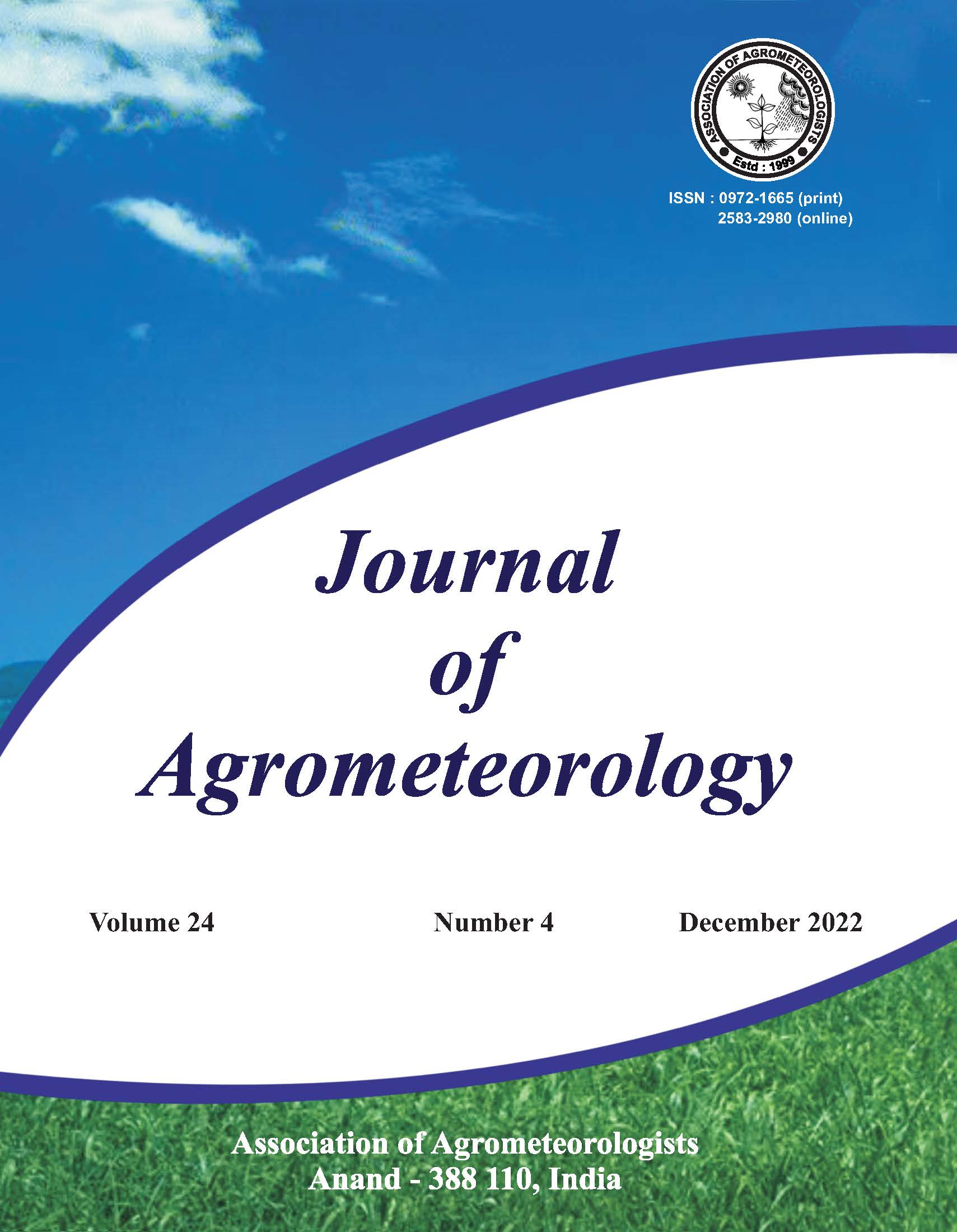Effect of elevated temperature on phenology, growth, yield components and seed yield of Brassica juncea grown in temperature gradient tunnels (TGT)
DOI:
https://doi.org/10.54386/jam.v24i4.1670Keywords:
Elevated temperature, Indian mustard, Temperature gradient tunnel, Phenophases and yield attributesAbstract
Elevated temperature is one of the major production constraints of Indian mustard. The present study was aimed to estimate variations in phenology, yield attributes and seed yield under elevated temperature (ET) in temperature gradient tunnels (TGT) and open field for heat tolerance. Fourteen genotypes consisting of introgression lines and the mustard varieties were sown in TGT and open field for two consecutive winter seasons (2017-2019).The phenophases were shortened due to elevated temperature in TGT as compared to control except physiological maturity which was trailed by 17-18 days during both the years. Temperature affect was most severe on siliqua formation and seed filling. Among growth parameters only length of main shoot suffered reduction whereas yield contributing parameters like siliqua on main shoot, siliquae plant-1, seeds siliqua-1 and 1000 seed weight along with biomass, seed yield and harvest index suffered significant decline in TGT. Average temperature had positive correlation with all phenological parameters except flowering completion, growth parameters except number of primary and secondary branches while yield attributes only with 1000 seed weight, biomass and seed yield under TGT. Interestingly, number of primary branches had significant negative correlation with average temperature under both control (r=-0.59*) and TGT (-0.61*). Phenological traits had strong relationship with seed yield under TGT. However, seed yield had strong relationship with growth parameters, yield attributes under control except for number of primary branches. Biomass had strong relationship with seed yield under both TGT (R2= 0.51) and control (R2= 0.43). Two years testing revealed introgression lines (JA24 and JA53) and varieties (JD6 and Giriraj) tolerant to heat stress.
Downloads
Published
How to Cite
Issue
Section
License
Copyright (c) 2022 LOVELEEN K. BRAR, PUSHP SHARMA , PRIYA CHUGH , PRABHJYOT KAUR , RAJNI SHARMA , S. S. BANGA

This work is licensed under a Creative Commons Attribution 4.0 International License.
This is a human-readable summary of (and not a substitute for) the license. Disclaimer.
You are free to:
Share — copy and redistribute the material in any medium or format
Adapt — remix, transform, and build upon the material
The licensor cannot revoke these freedoms as long as you follow the license terms.
Under the following terms:
Attribution — You must give appropriate credit, provide a link to the license, and indicate if changes were made. You may do so in any reasonable manner, but not in any way that suggests the licensor endorses you or your use.
NonCommercial — You may not use the material for commercial purposes.
ShareAlike — If you remix, transform, or build upon the material, you must distribute your contributions under the same license as the original.
No additional restrictions — You may not apply legal terms or technological measures that legally restrict others from doing anything the license permits.
Notices:
You do not have to comply with the license for elements of the material in the public domain or where your use is permitted by an applicable exception or limitation.
No warranties are given. The license may not give you all of the permissions necessary for your intended use. For example, other rights such as publicity, privacy, or moral rights may limit how you use the material.





